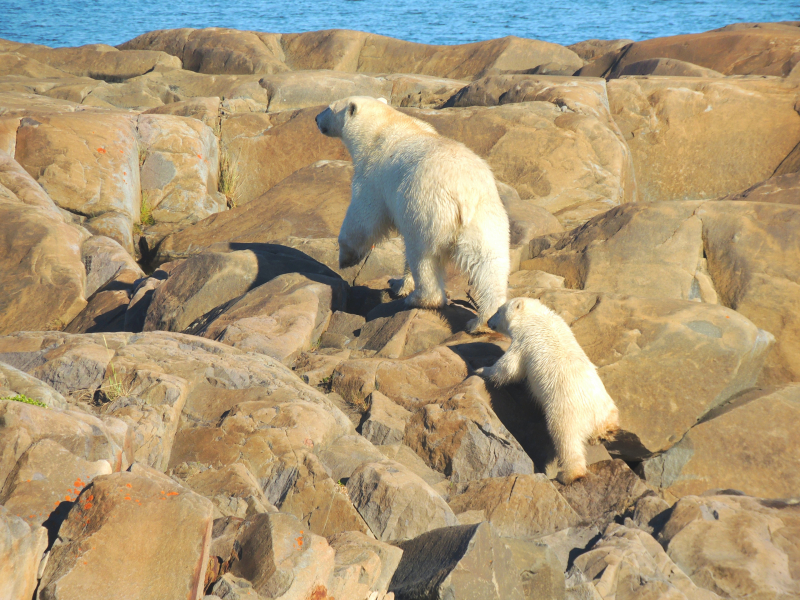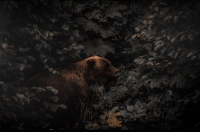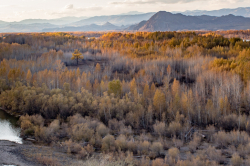Amur tiger (Primorsky Krai)
The blue St. Andrew's Cross stands for this region’s history as a Russian marine stronghold in the Far East, green is the color of the taiga, and the Amur tiger symbolizes Primorsky Krai’s unique nature.
This animal is the largest feline predator in the world and can weigh up to 300 kilograms and measure around three meters from tail to nose. There are only about 600 Amur tigers left in Russia due to illegal hunting and destruction of their habitats.
Wild reindeer (Nizhny Novgorod)
Reindeer are an extinct species in the Nizhny Novgorod Oblast, but their image remains on the city’s coat of arms. The reindeer symbolizes purity, greatness, nobility, life force, wisdom, and fairness, whereas the crown above it stands for reaching a high degree of development.
Wild reindeer can migrate over distances up to 3,000 kilometers per year and are also great at swimming: they can cross rivers nine times quicker than a person would be able to. The population of this species has decreased by a large margin and now there are no more than one million of them in Russia, mostly due to illegal hunting.
Snow leopard (Pskov)
Snow leopard is an animal that never inhabited the Pskov region and was featured on the coat of arms for purely symbolic reasons. It mainly stands for bravery, plus its rather threatening posture is supposed to frighten the enemy: after all, Pskov is located near the state border and over the centuries, it’s been a stronghold of the country.
This species inhabits mountains at the height of 1,500-4,500 meters and tends to avoid people. Unfortunately, their beautiful fur attracts poachers and their population is now extremely small: there are less than a hundred snow leopards in Russia and no more than 4,000 worldwide.
Polar bear (Norilsk)
This coat of arms symbolizes the discovery of local Northern wonders and treasures explored by the first inhabitants of the Norilsk region. Copper, cobalt, and nickel, which are excavated in this region, are represented by three circles on one side of the key held by a polar bear, which stands for power.
These animals are the largest predators and their population suffers due to the destruction of their natural habitats and illegal hunting: there are only 5,000-7,000 polar bears in Russia and some 150-200 are lost to poachers every year.
Caucasian leopard (Northern Ossetia)
The golden Caucasian leopard has historically been the symbol of the Ossetian state and its power. The mountains behind it stand for the universal mountain and its eight tops – the ancient Ossetian image of the world.
Caucasian leopards have fantastic hearing and sight, as well as the ability to climb trees and cliffs. Scientists are working to increase their population artificially, as there is no hope that it’ll go back to normal by itself: there’s less than a thousand of these animals left worldwide.




